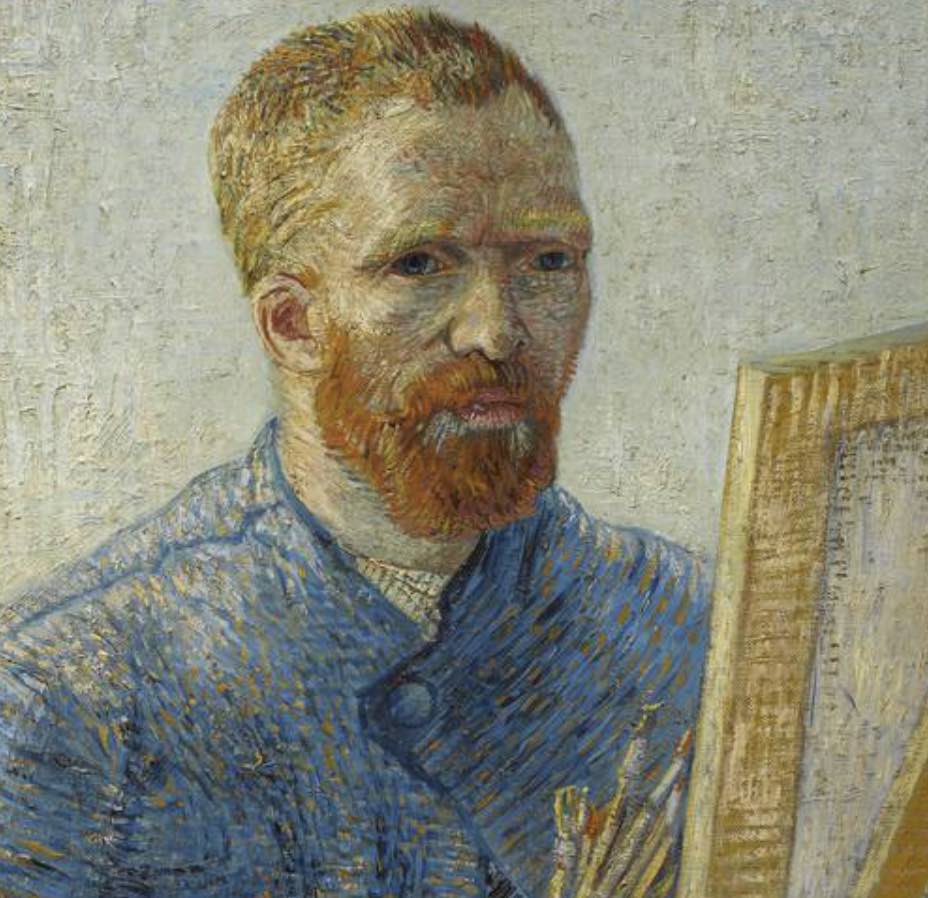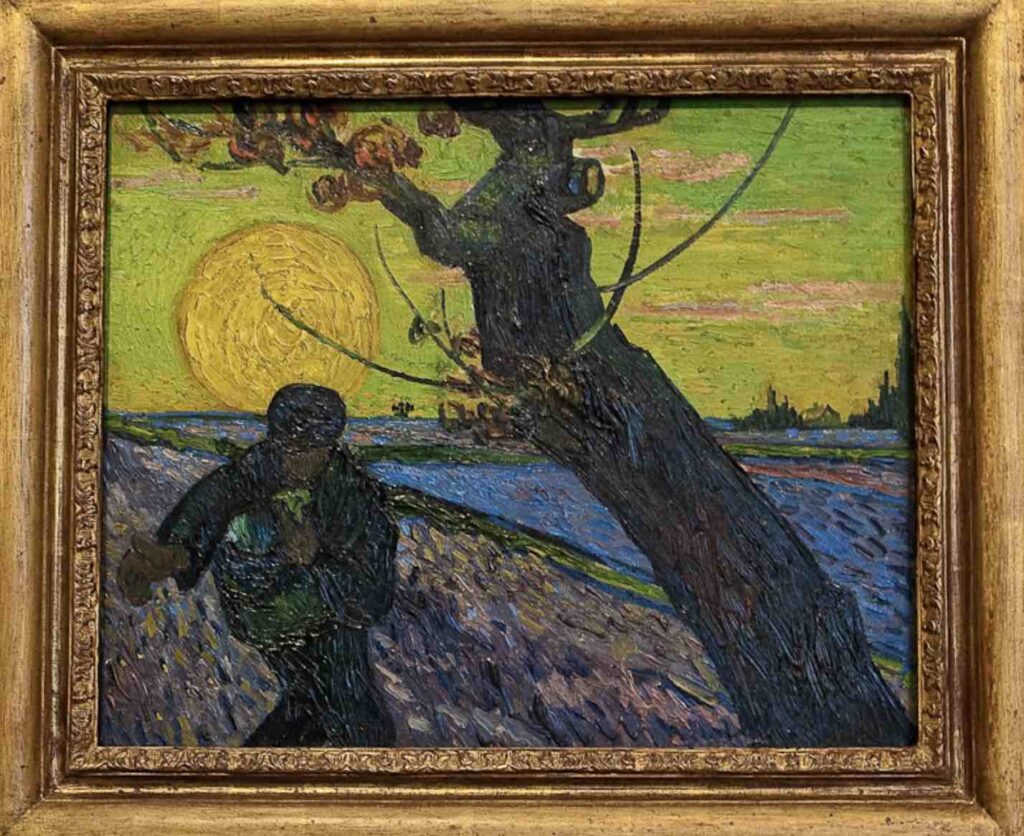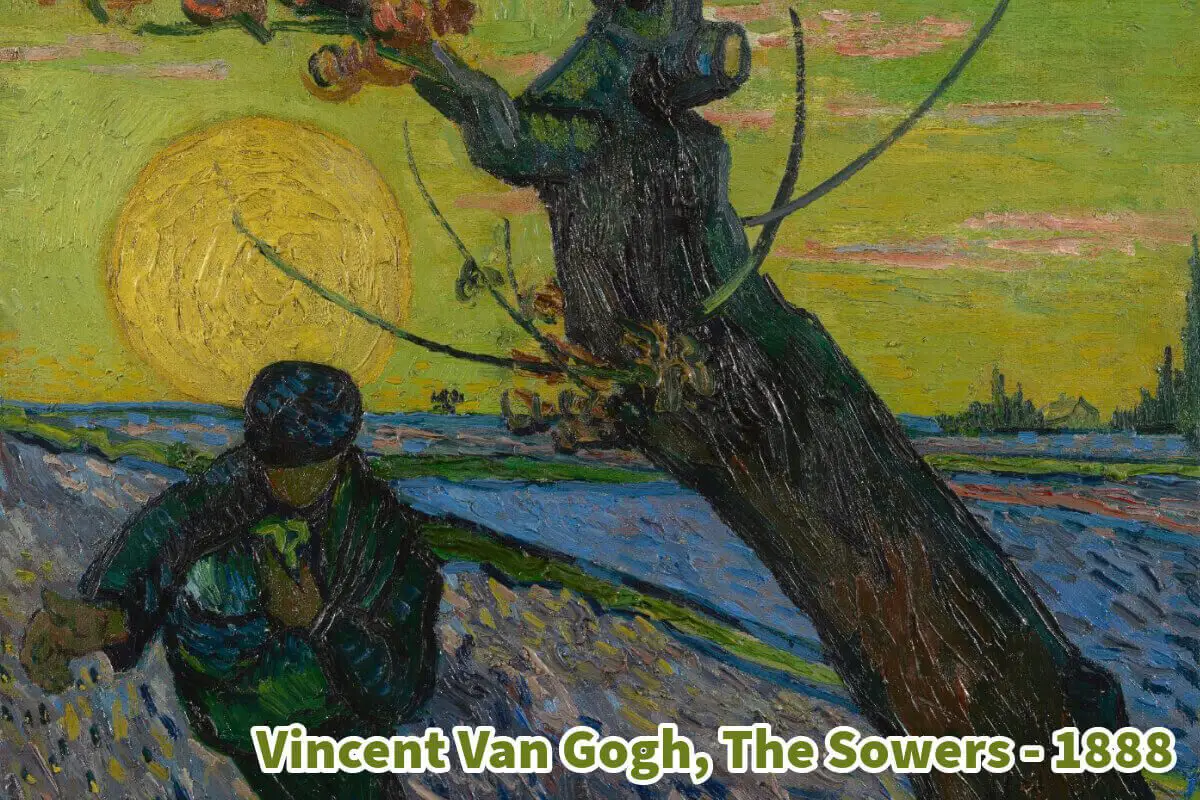Vincent Van Gogh is a significant artist. One of the fantastic things is that he painted so many different kinds and types of motifs.
Vincent Van Gogh’s “The Sower,” created during the autumn of 1888, stands as a captivating masterpiece that provides insight into the artist’s enduring fascination with the subject of sowers. This iconic artwork transcends the mere portrayal of a rural scene, profoundly exploring emotion, imagination, and the transformative potency of color.
Table of Contents
- Vincent Van Gogh’s “The Sower” (1888): A Masterpiece Of Passion And Imagination
- 8 Reasons Vincent Van Gogh Painted The Sowers
- Related Questions
Vincent Van Gogh’s “The Sower” (1888): A Masterpiece Of Passion And Imagination
Vincent Van Gogh’s “The Sower,” painted in the autumn of 1888, is a captivating masterpiece that offers a glimpse into the artist’s enduring fascination with the theme of sowers. This iconic painting represents a rural scene and a profound exploration of emotion, imagination, and the power of color.

Van Gogh’s fascination with sowers is evident in his numerous drawings and paintings on this theme, totaling more than 30 in his artistic career. While he painted “The Sower,” Van Gogh collaborated with the renowned artist Paul Gauguin, whose influence significantly shaped his artistic approach.
About Vincent Van Gogh And The Sower
One of the remarkable aspects of “The Sower” is Van Gogh’s departure from a strict adherence to reality. Under Gauguin’s guidance, he began to embrace the realm of imagination in his work, using colors to depict the scene and evoke profound emotions and passion.

Van Gogh masterfully employs color in this painting to convey the moment’s intensity. The greenish-yellow of the sky and the deep purple of the field take on leading roles, creating a vibrant and dynamic contrast. The bright yellow sun, resembling a radiant halo, transforms the Sower into a saintly figure.
The Sower Shows Van Gogh’s Artistic Ability
“The Sower” is a testament to Van Gogh’s ability to infuse ordinary scenes with profound meaning and emotion. It transcends the boundaries of a simple agricultural task and becomes a symbol of hope, inspiration, and the eternal cycle of life.
The Sower, bathed in the sun’s golden light, becomes a beacon of optimism, tirelessly sowing the seeds of possibility.
“The Sower” by Vincent Van Gogh is not merely a portrayal of a farming scene; it is a masterpiece that encapsulates the artist’s evolving artistic vision, his collaboration with Gauguin, and his bold exploration of color, emotion, and imagination.
The Sower is a testament to Van Gogh’s enduring legacy and ability to transform the ordinary into the extraordinary on canvas.
8 Reasons Vincent Van Gogh Painted The Sowers
Vincent van Gogh’s affinity for painting sowers can be attributed to several profound reasons that resonated deeply with his artistic sensibilities and personal philosophy:

Symbolism Of Life:
Sowing seeds carries profound symbolism, representing the cycle of life, growth, and renewal. Van Gogh, who often grappled with the complexities of existence, saw a powerful symbol of hope, perseverance, and the relentless march of time in the Sower.
Connection To Nature:
Van Gogh found solace and inspiration in the natural world, and the figure of the Sower was inextricably linked to the agricultural landscapes he encountered. It allowed him to depict the harmonious relationship between humans and nature, emphasizing the vital role of the earth in sustaining life.
Emotional Expression:
Van Gogh’s art was an outlet for his intense emotions. With its physical exertion and purposeful movement, the sowing gave him a compelling subject to convey his inner turmoil, energy, and passion.
Spiritual Significance:
The image of the Sower often held spiritual connotations for Van Gogh. He saw in it a parallel to the biblical parable of the Sower, where seeds represent the word of God and the potential for spiritual growth. This added a layer of depth and transcendence to his sower paintings.
Universal Themes:
Van Gogh’s choice to paint Sowers reflected his fascination with universal themes transcending cultural and temporal boundaries. Sowing seeds, a fundamental human endeavor, resonated with people from various walks of life and backgrounds.
Paul Gauguin’s Influence:
During his collaboration with Paul Gauguin in Arles, Van Gogh was exposed to new artistic perspectives. Gauguin encouraged him to avoid strict realism and draw more from his imagination.
This influence led Van Gogh to explore the sower theme with a heightened sense of emotion and imagination.
Color Exploration:
Van Gogh’s fascination with color and its emotional impact found expression in his sower paintings. He used bold and vibrant colors to convey the moment’s intensity, infusing his sowers with vitality and dynamism.
Personal Connection:
Van Gogh often identified with the Sower’s journey, feeling a personal resonance with the idea of toiling persistently to sow the seeds of his art. Just as the Sower invests in the earth with the hope of a bountiful harvest, Van Gogh invests his creativity and passion into his work, seeking to reap the fruits of his artistic labor.
Vincent van Gogh’s attraction to painting sowers can be traced back to his deep appreciation for this timeless theme’s profound symbolism, emotional expression, and spiritual significance. It allowed him to connect with nature, explore universal themes, and channel his emotions onto canvas while leaving an indelible mark on art.
Anita Louise Art is dedicated to art education, great artists, and inspiring others to find and create their art. We love art that uplifts and inspires. #ArtToMakeYouSmile! #ArtToMakeYouHappy!
If you want to see any of my art, you can find out more by clicking here. If you are interested in what inspires me and my paintings, you can discover more by clicking here.
We have a free newsletter and would love you to be part of our community; you can subscribe to the newsletter by clicking here. If you have any questions, I would be happy to talk to you anytime. You can reach me, Anita, by clicking here.
Subscribe to our Anita Louise Art YouTube Channel with great videos and information by clicking here.
Join us for our podcast “5 Minutes With Art.” Spend just 5 minutes a week with us to discover and learn about great art and artists. You can find out more about our podcast by clicking here.
Related Questions
How Much Is Van Gogh’s Starry Night Worth, And Other Facts
Vincent van Gogh’s Starry Night painting is considered priceless; many have estimated that the artwork is worth over 100 million US dollars. The Museum of Modern Art in New York City has had the painting in its collection since 1941.
By clicking here, you can discover more by reading How Much Is Van Gogh’s Starry Night Worth, And Other Facts
What Was The Impact Of Vincent Van Gogh On The Art World?
Van Gogh used color, form, and emotions in his art. He had a bright palette that was individualized for his time. Even though he did not see a lot of success during his life after he died, the impact of his art can be seen in both the Expressionism and Fauvism movements that were taking place in Europe.
By clicking here, you can learn more by reading What Was The Impact Of Vincent Van Gogh On The Art World?
Why Is Van Gogh Considered Such a Great Artist?
Vincent Van Gogh Starry Night painting is considered priceless; many have estimated that the price is worth well over 100 million US dollars. The Museum of Modern Art in New York City has had the painting in its collection since 1941.
By clicking here, you can discover more by reading Why Is Van Gogh Considered Such a Great Artist?

